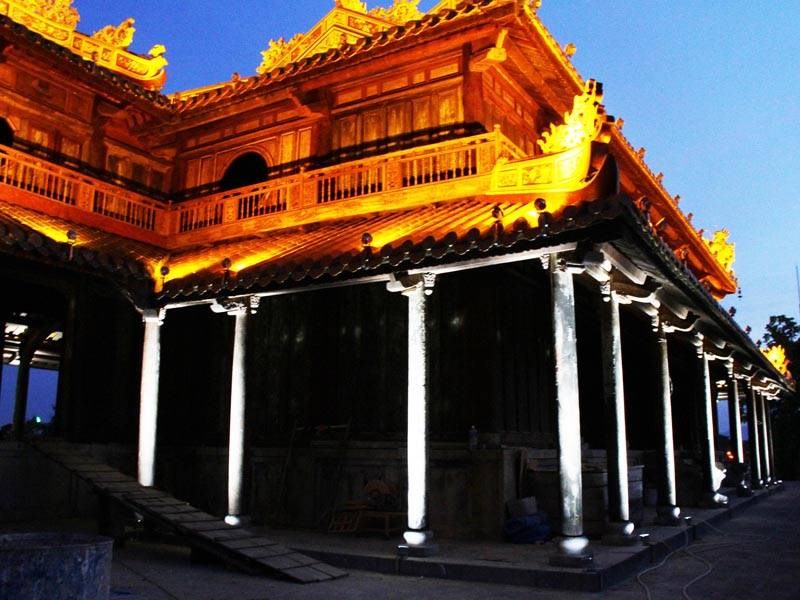According to the lighting needs expressed by the company in charge of the project, PhuThanh JSC- Hanoi, GRIVEN lighting design department put together a first draft of the installation scheme, choosing the right fixtures to reach the required effect. A strong contrast between the upper and lower part of the gate should be represented by a passage between warm and cold white shades. Yellow, along with all the warm tones of gold, represents the colour of the emperor, a symbol of a high social status but it is also the color of Buddhism, positivity, life, sun, harvest and joy. White, on the contrary, is the colour of death, mourning and dead cult but it also means pureness and innocence.
In order to achieve a beautiful, intensive golden shade on the upper part of the roof, a custom amber colour configuration was chosen for the compact sized spotlight units installed on the whole perimeter of the gate roof. Owing to their small bodies, a total of 84 units of Micro-Clip MK2 in amber with extra wide or wide optics along with 28 Jade 9 Easy Amber with extra wide optics have been easily mounted on the upper cornice of the gate in order to deliver a pleasant spot lighting scheme. The same appealing pattern is repeated also on the canopy, which completes the lower part of the roof with further 99 Micro-Clip MK2 units in amber colour fitted with either extra wide or medium optics for an optimal light distribution. To complete the elevated part of the structure with a strong light contrast, 52 units of Micro-Clip MK2, in cold white and with narrow optics, were used to highlight the wooden columns that support the canopy all around the gate. This creates a strong contrast between the central part of the gate, light and empty that rises from the massive lower bastion in order to support with its fragile essence the whole upper part of the structure.
For the lower part of the structure, a rough bearing wall, a cold white configuration was chosen to fully contrast with the splendour of the golden upper part, interrupted only by the warm shades washing the entrance doors. To reach this striking effect, 78 Parade S-W-20 Recessed in cold white equipped with wall wash optics have been embedded in front of the wall to wash it up with a uniform splash of cold white light. In correspondence with the three front doors, 22 pieces of the same Parade Recessed but in warm white configuration have been installed in order to achieve the required contrast.
Now the main entrance gate of Hue shines as never before to celebrate the past glory of the Imperial City.
